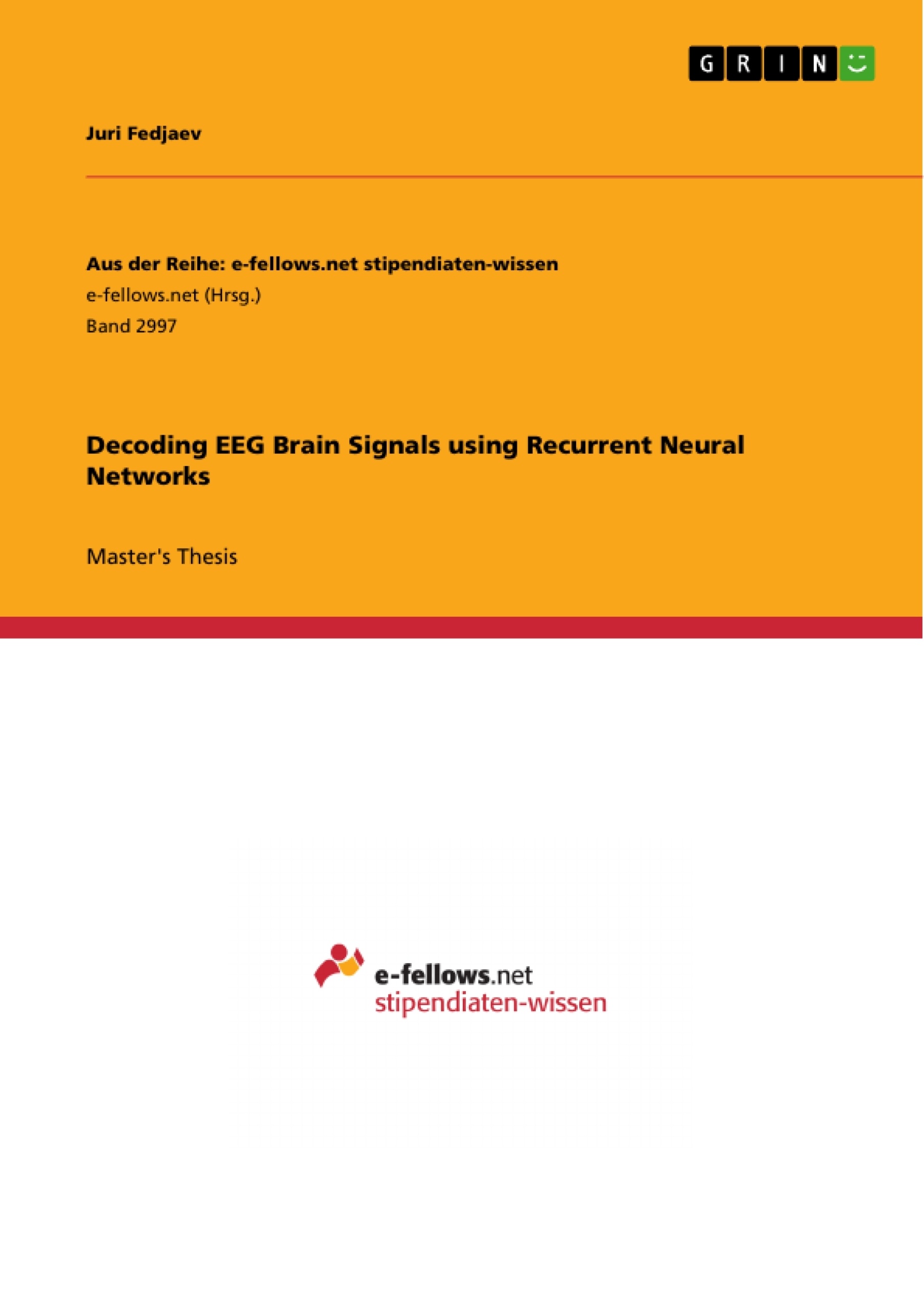Brain-computer interfaces (BCIs) based on electroencephalography (EEG) enable direct communication between humans and computers by analyzing brain activity. Specifically, modern BCIs are capable of translating imagined movements into real-life control signals, e.g., to actuate a robotic arm or prosthesis. This type of BCI is already used in rehabilitation robotics and provides an alternative communication channel for patients suffering from amyotrophic lateral sclerosis or severe spinal cord injury. Current state-of-the-art methods are based on traditional machine learning, which involves the identification of discriminative features. This is a challenging task due to the non-linear, non-stationary and time-varying characteristics of EEG signals, which led to stagnating progress in classification performance. Deep learning alleviates the efforts for manual feature engineering through end-to-end decoding, which potentially presents a promising solution for EEG signal classification.
This thesis investigates how deep learning models such as long short-term memory (LSTM) and convolutional neural networks (CNN) perform on the task of decoding motor imagery movements from EEG signals. For this task, both a LSTM and a CNN model are developed using the latest advances in deep learning, such as batch normalization, dropout and cropped training strategies for data augmentation. Evaluation is performed on a novel EEG dataset consisting of 20 healthy subjects. The LSTM model reaches the state-of-the-art performance of support vector ma- chines with a cross-validated accuracy of 66.20%. The CNN model that employs a time-frequency transformation in its first layer outperforms the LSTM model and reaches a mean accuracy of 84.23%. This shows that deep learning approaches deliver competitive performance without the need for hand-crafted features, enabling end-to-end classification.
Inhaltsverzeichnis (Table of Contents)
- Problem description
- Tasks
- Bibliography
- Abstract
Zielsetzung und Themenschwerpunkte (Objectives and Key Themes)
The main objective of this thesis is to develop a recurrent neural network algorithm to decode EEG brain signals during four motor imagery movements (left, right, both hands and rest). The algorithm will be trained offline on CPU or GPU using Theano packages, with the optional goal of converting it to a Spiking neural network for the highly power-efficient TrueNorth Neuromorphic hardware. This research aims to improve the accuracy and efficiency of brain-machine interfaces (BMI) for rehabilitation robotics.
- Decoding EEG signals for motor imagery movements
- Developing recurrent neural network algorithms for EEG signal analysis
- Improving accuracy and efficiency of BMI systems
- Exploring the potential of Spiking neural networks for low-power EEG decoding
- Utilizing deep learning models like LSTM and CNN for EEG signal classification
Zusammenfassung der Kapitel (Chapter Summaries)
- Problem description: This section introduces the concept of Motor Imagery Electroencephalography (MI-EEG) and its significance in brain-machine interfaces (BMI) for rehabilitation robotics. It highlights the challenges of decoding non-stationary and noisy EEG signals and the potential of deep learning algorithms to address these challenges.
- Tasks: This section outlines the key tasks involved in the thesis project. It includes a review of EEG decoding literature, development and training of a recurrent neural network for EEG decoding, comparison of results with existing methods, and optional implementation on TrueNorth IBM's chip.
- Abstract: This section provides a concise overview of the thesis, focusing on the use of deep learning models like LSTM and CNN for decoding motor imagery movements from EEG signals. It mentions the development of both models, the use of data augmentation techniques, and the evaluation on a novel EEG dataset.
Schlüsselwörter (Keywords)
The primary keywords and focus topics of this thesis include: EEG decoding, recurrent neural networks, LSTM, CNN, motor imagery, brain-machine interfaces, rehabilitation robotics, deep learning, data augmentation, TrueNorth Neuromorphic hardware, Spiking neural networks.
- Citation du texte
- Juri Fedjaev (Auteur), 2017, Decoding EEG Brain Signals using Recurrent Neural Networks, Munich, GRIN Verlag, https://www.grin.com/document/455235



